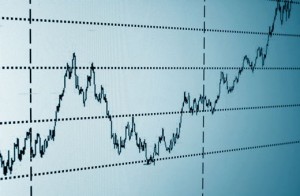
SPIVA Europe Scorecard: Measuring the Effectiveness of Passive Investing in Europe
Posted on 09/24/2014
This article is sponsored by S&P Dow Jones Indices.
By Aye M. Soe, CFA
Senior Director, Index Research & Design
At the heart of the active versus passive management debate lies the theoretical underpinning that the average return of both actively and passively managed assets must equal the aggregate market, thereby making it a zero-sum game. Since the costs of active management typically exceed those of passive management, the average actively managed dollar will underperform the average passively managed dollar after accounting for costs (Sharpe 1991). Over the past few decades, this debate has inspired many passionate believers on both sides, exhibiting its staying power as one of the more hotly contested financial theories.
As a way to keep score of the ongoing debate, S&P Dow Jones Indices (S&P DJI) started publishing the S&P Indices Versus Active (SPIVA®) Scorecard for the U.S in 2002. The scorecard measures the performance of actively managed domestic equity funds across various market capitalizations and styles, as well as fixed income funds, relative to their respective benchmarks. Results can vary on a year-over-year basis due to market conditions, with indices losing out to active funds in one year but winning in a subsequent year. However, the scorecard shows that over a longer-term investment horizon, most active managers have a difficult time outperforming their respective benchmarks. The five-year performance figures show the consistent losing pattern across most equity and several fixed income categories. In addition, the report dispels myths surrounding “inefficient” markets such as small caps and the emerging markets equities, the two areas in which active investing is perceived to offer opportunities due to the mispricing of securities.
The summer of 2014 marks the inaugural launch of the SPIVA Europe Scorecard, which will be released semi-annually. The report measures the performance of actively managed European equity funds denominated in Euro and British pound sterling against their respective benchmarks over one-, three- and five-year horizons as of December 31, 2013. While the report will not end the debate on active versus passive investing in Europe, it aims to make a meaningful contribution by examining the effectiveness of passive investing in the various European market segments.
Similar to the U.S. scorecard, the European edition highlights that a bull market cycle does not guarantee outperformance of active funds. The year 2013 marked a remarkable rebound for the European equity markets, as measured by the 20.97% gain of the S&P Europe 350 Index. During the same period, the majority of the euro-denominated actively managed funds (60.69%) invested in European equities underperformed the benchmark. Similarly, over three quarters (78.92%) of the funds invested in Eurozone equities failed to keep pace with their respective benchmark. The longer-term five-year data does not favor actively managed funds investing in European and Eurozone equities either. More than 60% of European equity funds and nearly 79% of Eurozone equity funds denominated in Euro underperformed the benchmarks.
Unlike Euro-denominated performance figures, which show the effectiveness of indexing unequivocally across most categories, British pound-denominated active funds exhibit mixed results depending on the category. Over near-, mid- and long-term investment horizons, most U.K. and European equities funds have posted better returns than the benchmark, indicating that active management opportunities are present in the space.
Lastly, the SPIVA Europe Scorecard seeks to address whether emerging market equities are an asset that can be effectively accessed via passive investing. The scorecard shows that regardless of the currency denomination of the funds, a significant majority of the actively managed funds investing in emerging markets equities fail to deliver higher returns than the benchmark over near-, mid- and longer-term horizons. For example, 87.65% of funds denominated in EUR and 62.5% of funds in GBP underperformed their benchmark. The results, therefore, attest that passive investing is a viable option for the European market when it comes to emerging markets equities.
In the wake of the 2008 financial crisis, investors across the globe are increasingly concerned not just with relative performance but also the costs incurred in seeking relative performance. As such, it is only natural that the active versus passive debate will continue to spark discussion. Against that backdrop, S&P DJI aims to become an objective scorekeeper of the debate by regularly examining which pockets of the European market work better for one strategy than the other.
S&P Indices Versus Active Funds (SPIVA®) Europe Scorecard is available here. See the Scorecard
